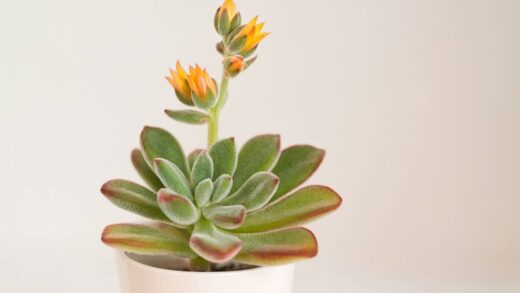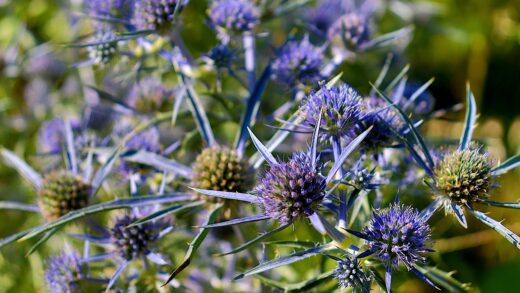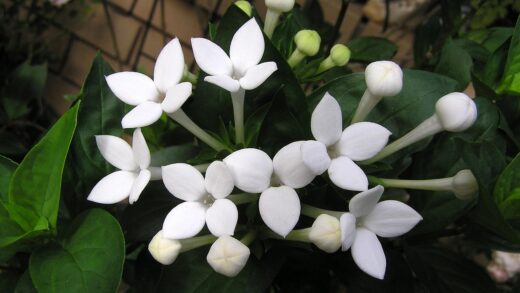Understanding the specific water requirements of the fernleaf peony is fundamental to its successful cultivation, as both under-watering and over-watering can lead to significant problems. This plant has a unique annual cycle that dictates its need for moisture, demanding consistent watering during its active spring growth and very little during its summer dormancy. Proper irrigation techniques involve providing deep, infrequent soakings that encourage a robust root system, rather than frequent, shallow sprinklings. Mastering the art of watering this particular peony means paying close attention to the plant’s signals, the soil conditions, and the time of year.
The most critical period for watering the fernleaf peony is during the spring. From the moment the first shoots emerge from the soil until after the flowering period is complete, the plant is in a state of rapid growth. During this time, it is developing its complex foliage, extending its stems, and forming its spectacular flower buds. This intense activity requires a consistent and reliable supply of moisture from the soil. A lack of water during this phase can result in stunted growth, weak stems that are unable to support the flowers, and a reduced number or size of blooms.
When watering during the spring, the goal is to keep the soil evenly moist but never waterlogged. The frequency of watering will depend heavily on your soil type and local weather conditions. In a well-draining loam, a deep soaking once a week during dry spells is often sufficient. It is always best to check the soil moisture before watering by inserting a finger or a small trowel a few inches into the ground. If the soil feels dry at this depth, it is time to water again.
The best method for irrigating peonies is to apply water directly to the soil at the base of the plant, using a soaker hose or a watering can. This technique ensures that the water penetrates deep into the root zone where it is needed most. Avoid using overhead sprinklers, as wetting the dense foliage can create a humid environment that promotes the development of fungal diseases like botrytis blight. Watering early in the day also allows any moisture that does splash onto the leaves to dry quickly in the sun.
Adapting to summer dormancy
A crucial shift in watering practices must occur as the fernleaf peony transitions from its active spring growth into its summer dormancy. After the plant has finished flowering, typically by early summer, its metabolic activity slows down dramatically. The foliage will gradually begin to yellow and wither as the plant’s energy is redirected from top growth to storage in its underground tuberous roots. This is a natural and necessary part of its life cycle, preparing it for the following year.
More articles on this topic
During this dormant period, the plant’s need for water is drastically reduced. The inactive roots are no longer efficiently taking up moisture from the soil, which makes them extremely vulnerable to rot if conditions remain too wet. Over-watering is one of the most common mistakes gardeners make with fernleaf peonies and is a frequent cause of plant failure. Continuing a spring watering schedule into the summer is a recipe for disaster and will almost certainly lead to the loss of the plant.
For established fernleaf peonies, natural rainfall is often sufficient to meet their minimal water needs throughout the summer and autumn. In periods of extended drought, you might need to provide a very occasional deep watering, perhaps only once every three to four weeks. The goal is simply to prevent the soil from becoming completely bone-dry for a prolonged period. Always allow the soil to dry out thoroughly between these infrequent summer waterings.
It is essential to resist the temptation to water the plant in an attempt to keep the foliage green longer. The yellowing and dying back of the leaves is a pre-programmed process that cannot and should not be prevented. Allowing the plant to follow its natural dormant cycle without the stress of excess soil moisture is critical for its long-term health and ensures that it has properly prepared for a robust return the following spring.
Watering newly planted peonies
Newly planted fernleaf peonies have slightly different water requirements compared to well-established specimens. For the first year after planting, it is important to monitor soil moisture more diligently to ensure the young plant can establish a strong and healthy root system. When you first plant a bare-root division in the autumn, you should water it in thoroughly to settle the soil and eliminate air pockets around the roots. This initial watering is crucial for making good contact between the roots and the soil.
More articles on this topic
Throughout its first spring growing season, a new fernleaf peony will need consistent and careful watering. Because its root system is not yet fully developed and extensive, it is less able to draw moisture from deeper soil layers. Therefore, you may need to water it a bit more frequently than an established plant, especially during dry spells. However, the principle of deep, thorough watering remains the same, as this encourages the roots to grow downwards in search of moisture, building a more resilient plant.
Even as a young plant enters its first summer dormancy, you must still reduce watering significantly. While it may need slightly more moisture than a mature, established clump, the risk of root rot from over-watering is just as high, if not higher. Continue to check the soil moisture regularly and only provide water when the top several inches of soil have become dry. This careful management during the first year is a critical investment in the plant’s future.
By the second year, the peony should have developed a more substantial root system and can be treated as an established plant. Its watering needs will align with the typical cycle of consistent moisture in the spring and drier conditions during summer dormancy. The attentive care provided during its first year helps to build the foundation for a vigorous and long-lived plant that will require less intervention in the future.
The impact of soil type on irrigation
The type of soil in your garden has a profound impact on how you should approach watering your fernleaf peony. Different soil structures retain and drain water at vastly different rates, which directly affects how often you will need to provide supplemental irrigation. Understanding your specific soil composition is key to developing an effective and appropriate watering schedule. Failure to account for your soil type can easily lead to chronic under-watering or, more commonly, fatal over-watering.
If your garden has heavy clay soil, you will need to be particularly cautious with your watering practices. Clay particles are very small and tightly packed, causing the soil to drain very slowly and retain moisture for long periods. In this environment, the risk of waterlogged conditions and root rot is extremely high. You will need to water much less frequently than someone with sandy soil, and it is absolutely essential to allow the soil surface to dry out significantly between waterings. Amending clay soil with organic matter to improve its structure and drainage is highly recommended before planting.
Conversely, if you are gardening in sandy soil, you will face the opposite challenge. Sandy soil is characterized by large particles and large pore spaces, which allows water to drain through it very quickly. This excellent drainage is beneficial in preventing root rot, but it also means that the soil has a low water-holding capacity and dries out rapidly. In sandy conditions, you will likely need to water your fernleaf peony more often during its active spring growth phase to ensure it receives consistent moisture.
The ideal soil for a fernleaf peony is a well-draining loam, which offers a healthy balance of moisture retention and drainage. Loam contains a mix of sand, silt, and clay particles, along with a good amount of organic matter. This structure holds enough water to be readily available to the plant’s roots but also allows excess water to drain away freely, preventing saturation. Even with ideal soil, you should always rely on checking the actual soil moisture rather than watering on a fixed schedule.
Recognizing signs of water stress
Observing your fernleaf peony closely can provide clear indicators of its hydration status, helping you to identify both under-watering and over-watering. A plant that is not receiving enough water, particularly during its critical spring growth period, will often show signs of wilting. The delicate, fern-like leaves may droop, and the flower stems can appear weak and unable to support the weight of the buds. In cases of prolonged drought, the edges of the leaves may turn brown and crispy.
Another sign of under-watering during the spring is a poor floral display. The plant may produce fewer flower buds than usual, the buds may fail to open properly, or the flowers that do open may be smaller than expected. This is a direct result of the plant not having sufficient water resources to support the energy-intensive process of flowering. If you observe these symptoms during a dry spring, it is a clear signal that you need to increase the frequency or depth of your irrigation.
Conversely, the signs of over-watering are often more insidious and can be more damaging in the long run. The most common symptom of excessive soil moisture is the yellowing of the lower leaves, which may then progress up the plant. The stems at the base of the plant might become soft, discolored, or mushy, which is a classic sign of crown or root rot. A plant suffering from root rot may also appear wilted, which can be confusing, but in this case, the wilting is caused by the damaged roots being unable to absorb water, even though the soil is saturated.
If you suspect over-watering, you must act quickly to allow the soil to dry out completely. Cease all supplemental irrigation immediately. In severe cases, especially in heavy clay soil, you may need to carefully dig around the plant to help aerate the soil. Prevention is the best strategy: always ensure your peony is planted in a well-draining location and always check the soil moisture before reaching for the hose. Paying attention to these signals is crucial for maintaining the health of this prized garden plant.


















